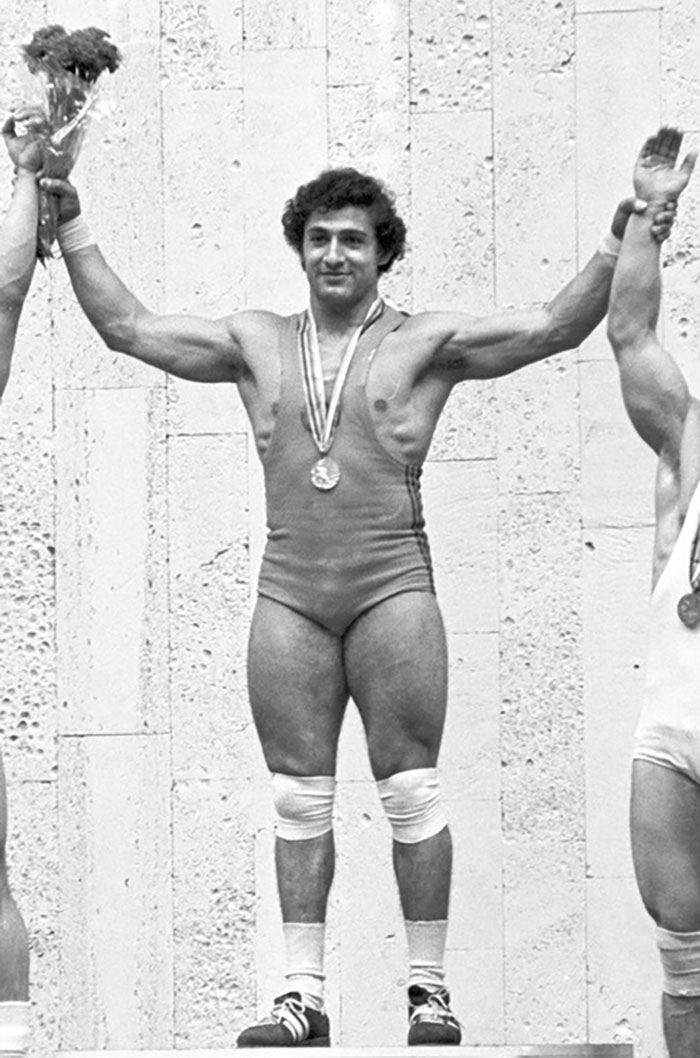What did you earn from your job last year? What place did your team finish in the standings? What trophy did you win? What award did you get? What measure of social status did you receive?
In moderation, this focus on what is fine. I like getting results just as much as the next person. I like performing well. I like being on top of my game. Achievement can be a good thing. However, our obsessive focus on what we’re winning can also blind us from understanding how people become winners. If you focus too much on the finish line, you miss the strategy going on during the race. As I continue to study top performers from all areas of life — athletes, artists, entrepreneurs, and more — I’ve begun to see similar patterns emerge among these people. Today, we’re going to venture into the world of weightlifting to uncover one of these patterns.
The Incredible Success of Yuri Vardanyan
Yuri Vardanyan is widely considered one of the greatest Olympic weightlifters of all time. Throughout the 1970s and 1980s, Vardanyan routinely set world records in the sport, and his run of success from 1977 to 1985 is stunning. (1) Here are Vardanyan’s results at the World Weightlifting Championships and the Olympic Games during that time span:
1977 World Championships – Gold 1978 World Championships – Gold 1979 World Championships – Gold 1980 Olympics – Gold 1981 World Championships – Gold 1982 World Championships – Silver 1983 World Championship – Gold 1985 World Championship – Gold
Now for the important question: What methods did Vardanyan use to achieve such an incredible run of success? Are there any lessons we can learn from him and apply to our own lives?
Volume Before Intensity
In 1992, after his own weightlifting career had finished, Yuri moved his family to the United States. His son, Norik Vardanian, began to make a name for himself in weightlifting a few years later. Today, Norik is the number one ranked weightlifter in the United States and is hoping to qualify for his second Olympic Games in 2016. Recently, Norik posted a training video (here) of a successful attempt to set a new personal record on the front squat as his dad watched on, coaching him. Here’s what he said: Pause for a moment and consider how this training approach differs from that of most people in the gym (and in many other areas of life as well). If the best training method for an Olympian is to focus on doing a volume of work and mastering repetition after repetition, why would it make sense for you or I to train by lifting the maximum amount of weight possible? And yet, this is often a trap we fall into. The problem with the “Go Big or Go Home” philosophy is that when you don’t have the underlying foundation of strength to handle the intensity of the effort, you’re just setting yourself up for failure. This is why I believe you should focus on volume before intensity.
Fast Growth Is Overrated
So many of the problems I have run into as an entrepreneur, as a writer, and as an athlete have been because I have tried to grow too fast. I was focused on getting a particular result so much so that I ignored the fundamental habits that would have made my growth sustainable. Fast growth forces you into a higher cost environment, and if you don’t have the systems and ability to handle those costs, you’ll end up paying for it.
When I tried to push myself to lift bigger weights in record time, my body got run down and injured. When I tried to force my business to the “next level” without knowing what I was getting into, I got stressed out and stepped on people’s toes without meaning to. When I tried to push down the accelerator and double revenues, I fell flat on my face with a product launch and didn’t have a system that could service customers properly.
Intense growth and intense effort are great — if you have the foundation to handle the intensity. This is why Yuri Vardanyan focuses on five-rep maxes. He’s building the foundation. Put in your reps and build the capacity to do the work. There will be time for maxing out later. First, build the foundation. This article was originally published on JamesClear.com. Featured photo credit: Yasunobu Hiraoka via flickr.com
